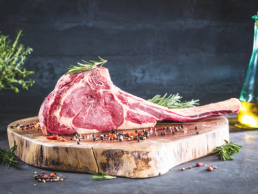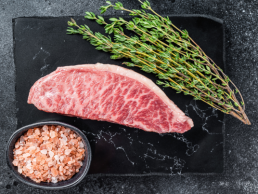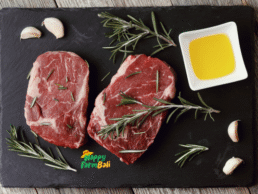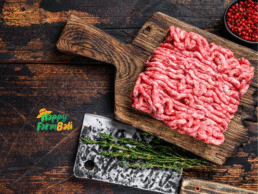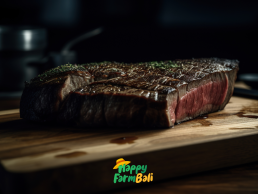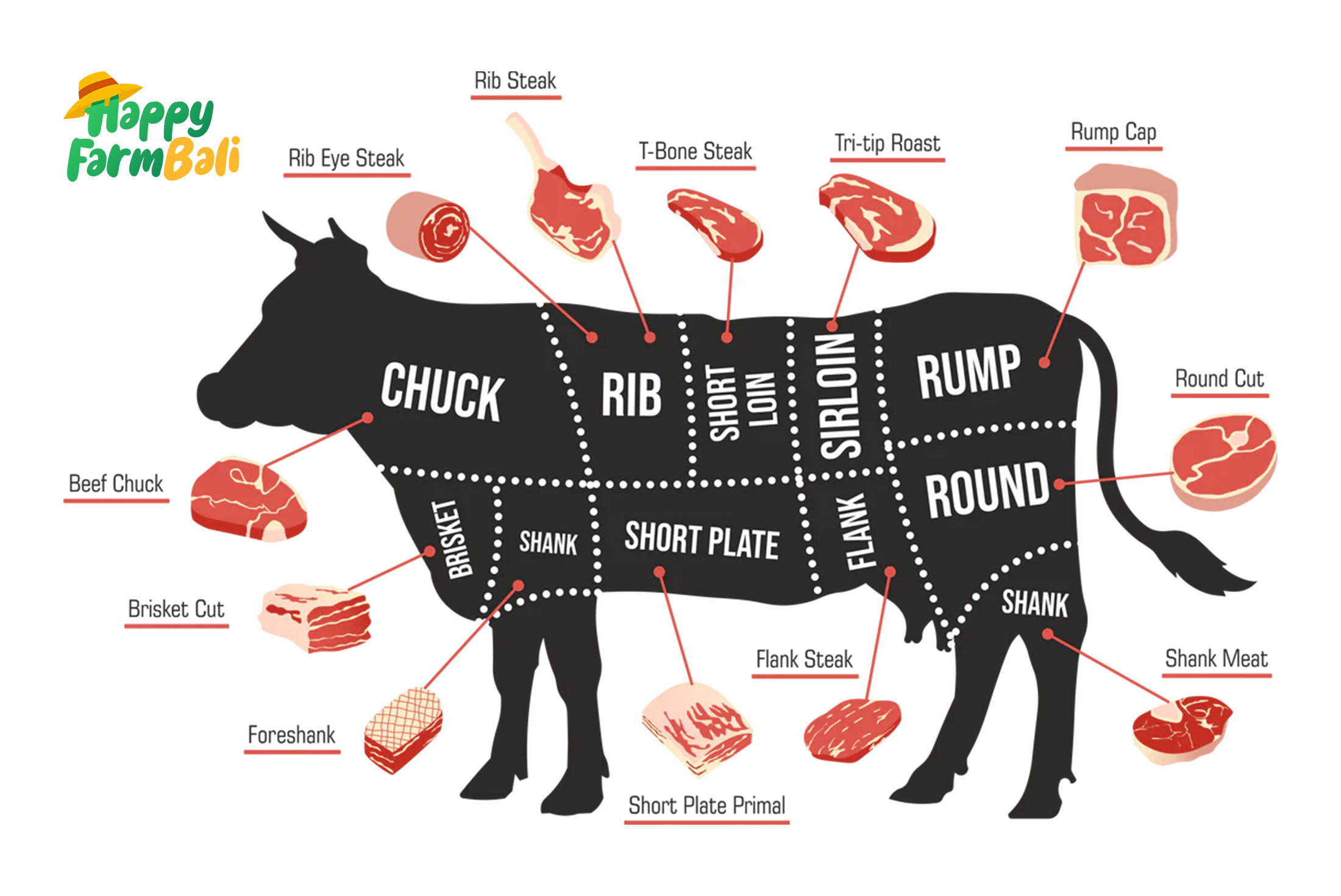Tomahawk: One of the Premium Beef Cuts
What is a Tomahawk?
A Tomahawk Beef Cut is a premium cut of beef sourced from the ribeye, one of the most tender and marbled parts of the cow. The main characteristic of tomahawk meat is the ribs that are still attached to the cut, usually cut long to represent a tomahawk axe (a traditional Native American weapon), which gives the cut its name.
Tomahawk cuts have a very attractive appearance and are often served in large portions. The long ribs not only add aesthetic value to the presentation, but also provide more depth of flavor as they help retain the juiciness and aroma of the meat during the cooking process.
In most cases, tomahawk meat is usually cooked by grilling or roasting over an open flame to achieve a crisp texture on the outside while remaining juicy and tender on the inside. Due to its large size and the presence of bones, it is often considered a special dish and served on special occasions.
Why is Tomahawk a Premium Cut of Meat?
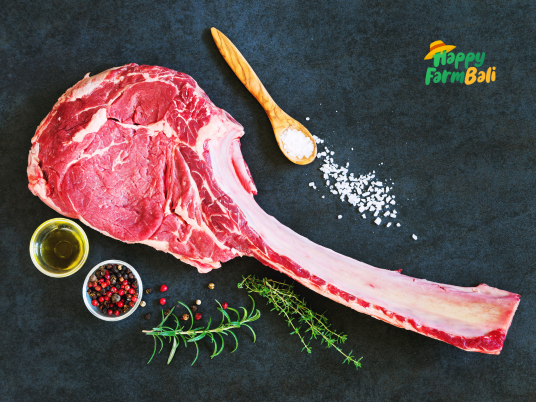
In a culinary context, the term “tomahawk” refers to a type of beef cut that is considered a premium cut. Tomahawk steak is a cut taken from the ribeye section of the cow, but with the ribs left long and encased in the meat. This cut has a distinctive shape, similar to a traditional axe (tomahawk), which makes it visually appealing.
Some of the reasons why Tomahawk steak is considered a premium meat include:
- Meat Quality: Tomahawk steak is taken from the ribeye, which is known to be one of the most succulent and tender parts of the cow. It has high marbling (intramuscular fat), which gives it a rich flavor and tender texture.
- Size and Appearance: Tomahawk steaks are typically large in size, often reaching 1.2 to 2 kg or more. The long bones and dramatic appearance add a sense of luxury and distinction, making it a popular choice for special occasions or in high-end restaurants.
- Texture and Flavor: The rich marbling of the tomahawk steak gives it a deep flavor and a very tender texture when cooked. This meat is ideal for cooking with methods such as grilling or roasting to retain the natural flavor and succulence of the meat.
- Exclusivity: Due to the size and quality of this cut of meat, Tomahawk steak is not always widely available in all restaurants or butcher shops. This cut is often offered at premium restaurants or as part of a specialty menu, adding to the sense of exclusivity.
For these reasons, Tomahawk steak is often priced higher and is considered one of the most premium cuts of meat among meat lovers.
Different Types of Premium Beef Cuts
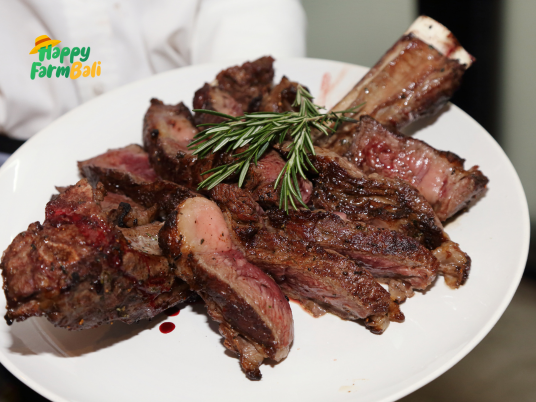
Here are some types of premium beef cuts that are commonly available in the market and pretty easy to find, these cuts are popular enough for food lovers:
Wagyu
- Kobe Beef: Known as one of the most expensive and tender beef in the world, Kobe beef is a type of Wagyu beef from Japan that has a very high marbling (intramuscular fat), giving it an amazing flavor and a very tender texture.
- Matsusaka and Omi Beef: Two other types of Wagyu from Japan, also known for their exceptional marbling and deliciousness.
Ribeye
- Ribeye Steak: Taken from the rib section of the cow, this cut is known for its high fat marbling, which makes it very juicy and full of flavor.
- Tomahawk Steak: A variant of the ribeye with long ribs still attached, adding a dramatic presentation and rich flavor.
Tenderloin (Fillet Mignon)
- Tenderloin: Known as the most tender part of the cow, the tenderloin has a smooth texture and little fat, making it a top choice for premium steaks.
- Chateaubriand: A large cut from the center of the tenderloin, often served as a fancy steak dish for two or more people.
Porterhouse
- Porterhouse Steak: A combination of tenderloin and striploin, this cut offers two different textures in one large cut. The tenderloin provides tenderness, while the striploin provides a stronger flavor.
T-bone
- T-bone Steak: Similar to a porterhouse, but with a smaller tenderloin section. This cut is notable for the “T"-shaped bone that separates the tenderloin and striploin.
Striploin (New York Strip)
- New York Strip: This cut is taken from the loin of the cow and has a strong flavor with less marbling than the ribeye, but is still very tender.
Sirloin
- Top Sirloin: Cut from the back of the cow, sirloin offers a balance of strong flavor and a fairly soft texture. Often used for premium steaks at a more affordable price.
Brisket
- Brisket: Although usually prepared with slow-cooking methods such as barbecue or braising, a properly cut brisket can be a very tender and delicious meat dish.
Flank
- Flank Steak: Taken from the belly of the cow, flank steak has a chewier texture, but if cooked and sliced properly, this cut can be very flavorful.
Short Ribs
- Short Ribs: Cut from the lower part of the rib cage, short ribs have a rich flavor and are usually slow-cooked to produce a very tender and flavorful meat.
Picanha
- Picanha: A cut of meat from the top of a cow's rump, popular in Brazil and often served in churrascarias. It has a thick layer of fat on top that adds flavor when grilled.
These cuts of meat are known for their high quality and are often served in fine restaurants or sold at premium prices in meat markets. Each has unique flavor and texture characteristics, making them a favorite among meat lovers.
Premium Beef Cut Supplier
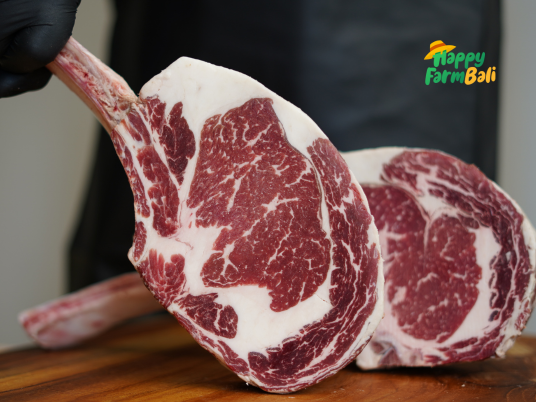
Happy Farm Bali is a premium beef cut supplier based in Bali, Indonesia. They are known for providing high-quality beef that is carefully selected to ensure tenderness, flavor, and superior quality. Happy Farm Bali prioritizes cleanliness standards and hygienic processing so that each cut of meat produced is of consistent quality. In addition, they also focus on sustainable farming practices, ensuring that the cows are well cared for and treated ethically. With this commitment to quality and service, Happy Farm Bali has become a top choice for fine dining restaurants, five-star hotels, and consumers looking for premium beef in Bali.
Introducing Wagyu Beef, A Luxury Food You Must Try!
What is Wagyu Beef?
Wagyu beef comes from the original Japanese breed, which has evolved by adapting to Japan's unique climate and environment. Since a modern beef eating culture started to develop in Japan in the 1860s, wagyu has been developed into a higher quality beef to meet the tastes of Japanese consumers. Wagyu beef has been increasingly exported to the global market and created a new market value as one of the world's most luxurious food products. In recent years, as wagyu beef has become more famous in international markets, the quality of wagyu beef has seen a steady growth in exports.
The outstanding characteristic of wagyu beef is its well-shaped marbling. The high intramuscular fat content elevates the texture, juiciness, and its overall tenderness. In addition, the fat composition of wagyu beef is very different from other beef. The distinctive aroma of wagyu beef gives it a sweet and fatty sensation. Even though it's rich in fattiness, wagyu has a healthier fat in comparison with regular beef. Wagyu fat contains more omega-3 and omega-6 fatty acids, which are good for heart health.
The word “Wagyu” comes from the Japanese language, where “Wa” means Japan and “Gyu” means cow. So, wagyu literally means “Japanese Cow”. These cattle were originally used as labor animals in agriculture because of their strength and endurance. One of the distinctive features of wagyu is its exceptional marbling, which is the distribution of fat within the muscles. This marbling provides the soft texture and rich flavor that makes Wagyu so special. This fat is also healthier as it contains more monounsaturated fatty acids. There are several types of Wagyu cow, the most famous being Kuroge Washu, Aakage Washu, Nihon Tankaku Washu, and Mukaku Washu. Of these four types, Kuroge Washu is the most famous for its superior marbling quality.
Wagyu Beef Price
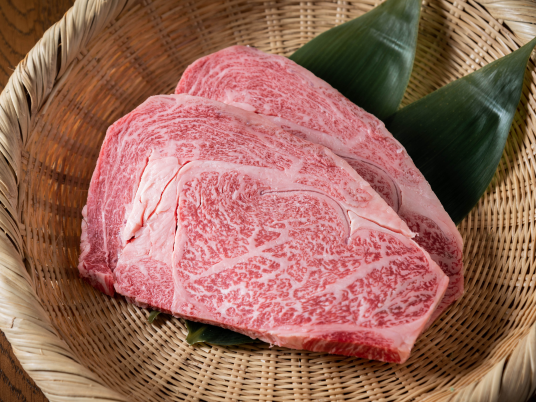
Wagyu meat is famous for its high price. This is due to its intensive curing process, long rearing period and high quality finish. Wagyu meat is often considered a luxury dish and is usually served in relatively small pieces. Until recently, only wagyu with A3 to A5 certification could be sold in Japan. The higher the certification, the more expensive it will be. Why is wagyu meat so expensive? Despite the high price, wagyu is still a type of meat that has many enthusiasts.
Wagyu meat is a culinary marvel that is prized around the world. With its signature marbling, intensive care, and exceptional flavor, wagyu meat is one of the most exquisite food products that meat lovers can enjoy. Despite its high price, the experience of savoring wagyu meat is something worth trying for those looking for an unforgettable culinary experience. Due to its quality and exclusivity, wagyu is often sold at a very high price. A kilogram of wagyu A5 beef can reach hundreds to thousands of dollars, depending on the market and availability.
Wagyu Beef Steak

Although Wagyu originated in Japan, its popularity has spread all over the world. Countries such as the United States, Australia, and Canada also breed Wagyu cattle, although the quality may differ compared to the original Japanese Wagyu. Due to its unmistakable texture and taste, this meat is a favorite of steak lovers. Wagyu beef steak is one of the most luxurious and prestigious foods in the culinary world, especially in the world of trade. Wagyu steak is a premium type of beef originating from Japan, renowned for its exceptional quality. It comes from Wagyu cattle, which are genetically endowed with the ability to produce high marbling or intramuscular fat.
This marbling gives Wagyu beef its soft texture and unique rich flavor, making it very different from other types of beef. When cooked as a steak, wagyu does not require much seasoning or sauce as its natural flavor is already very rich and complex. The common cooking method is to grill or pan-fry it quickly at a high temperature to preserve its tenderness and cheesiness. Wagyu's tender texture and melt-in-the-mouth flavor make it a favorite choice in fine dining restaurants and among meat lovers. The price of Wagyu steak is usually higher than regular steak, but for many, the experience is worth the cost.
Wagyu Beef A5

For many foodies, tasting Wagyu A5 is an extraordinary experience. But what makes regular wagyu different from wagyu A5? It is interesting to discuss. Wagyu beef, as a whole, is already known for its tender texture and rich flavor compared to regular beef, making it a popular choice among meat lovers around the world. Wagyu A5 is the highest level of Wagyu beef grading, indicating exceptional quality in terms of marbling, texture, and flavor.
In Japan, wagyu is graded based on a strict grading system. The A5 level is the highest, signifying exceptional quality in terms of marbling, color, texture, and fat quality. This system ensures that only the best quality meat gets the A5 label. It is awarded based on a Japanese grading system that measures marbling, meat color and brightness, texture, and fat quality. The “A” in A5 refers to the yield grade, which means it has a high amount of meat per unit weight, while a “5” indicates the highest level of marbling, ideal meat color, and extremely tender texture. This abundant marbling gives Wagyu A5 a rich flavor and an almost melt-in-the-mouth texture.
This beef is usually served in small portions to highlight its intense flavor and is prepared with minimalist cooking techniques to maintain the integrity of its natural flavors. Wagyu A5 is often served in fine dining restaurants and is known to command a very high price, reflecting the meticulous care and processing as well as the exclusivity of the product. The price of Wagyu A5 is usually much higher than lower grade Wagyu, reflecting the exclusivity and premium quality it offers.
Wagyu Beef Supplier

Industrial wagyu suppliers are usually meat companies that are responsible for providing Wagyu beef to various consumers, including restaurants, hotels, markets, and individuals. The main duties of a wagyu beef supplier include the selection, slaughtering, and distribution of high-quality Wagyu beef. These suppliers often work directly with the farms that breed wagyu cattle, ensuring that the meat they distribute meets strict quality standards. They are also responsible for maintaining the storage and transportation conditions of the meat to keep it fresh and maintain the premium quality of Wagyu.
If you are looking for a beef supplier in Bali, Happy Farm Bali is the right choice. Happy Farm Bali is known as one of the best beef providers in the region, focusing on quality and customer satisfaction. They are ready to distribute their Wagyu beef products, ensuring that every piece of meat you receive is the best.
Happy Farm Bali offers not only Wagyu, but also a variety of other beef products that are produced with high quality standards. With experience and a good reputation in the industry, Happy Farm Bali ensures that all the meat they distribute is carefully processed and packaged, maintaining the flavor and texture desired by meat lovers. Customers can rely on Happy Farm Bali to fulfill their needs for high-quality beef, both for household use and culinary businesses.
How to Make Beef Meltique, a Beef That Looks Like Wagyu
What is Beef Meltique?
Beef Meltique? Beef is an essential food ingredient in high demand. Many types or parts of beef cuts are commonly available on the market, beef meltique is one of them. Meltique meat is regular beef that has gone through the process of injecting vegetable fat to get marbling that resembles wagyu meat. By injecting plant-based fat (usually canola oil) from the seeds of canola flowers, this regular meat can be similar to wagyu. When we talk about wagyu, this type of meat, popular for its marbling, is one of the most favorite and famous beef cuts in the culinary industry. In the end, many people think they are eating wagyu, but in fact they are eating a meat that tastes like wagyu (meltique).
One of the affordable yet quality alternatives to wagyu is beef meltique. Meltique beef was specifically created to be an alternative to the expensive wagyu beef. The texture is soft enough to be similar to that of premium meats. Commonly, the part of the beef that is processed into meltique is the area around the loin, either sirloin or tenderloin. The meltique process is also relatively cheap and simple, so the products can be priced at a much more affordable price.
The Characteristics of Beef Meltique
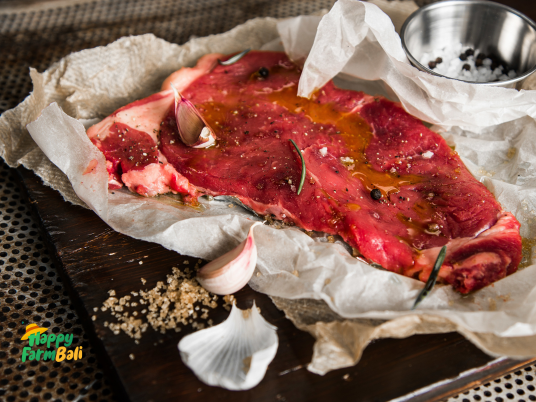
Beef meltique is the outcome of food technology innovations designed to imitate premium grade meat in a more efficient and affordable way. Here are three characteristics that set Meltique apart from other types of beef.
1. Fat Injection Process
Meltique is made by injecting fat into the meat grids. The type of fat injected is usually cow fat or plant-based fat, which is injected in an even pattern. This process imitates the natural marbling of Wagyu beef, giving it a similar texture and rich flavor.
2. Tender Texture
Thanks to the well-balanced fat distribution, Meltique has a soft and juicy texture. This provides a satisfying eating experience similar to that of Wagyu beef, even though it is not exactly the same.
3. Rich Flavor
Meltique offers a delicious flavor with a strong touch of umami because of the injected fat. While this flavor is not as complex as Wagyu, Meltique still provides a satisfying flavor profile for many consumers.
Is Meltique Beef Healthy?

Considering how artificial the process has been, is meltique beef dangerous? What if we consume it? Is it safe? The answer is not dangerous and safe for consumption. This artificial meat is still safe to consume without having any negative effects. As long as consumption is within reasonable limits and not overeating, beef meltique is safe to consume. Just like other beef, you can still enjoy this meltique beef dish safely without worrying. That's because the fat used for injection is a type of plant-based fat from the canola plant. This vegetable fat will not have too much of an adverse effect when consumed, as long as it is in reasonable quantities.
The major nutrients of beef meltique will include a blend of high-quality animal and plant-based proteins, fats, and a variety of vitamins and minerals that are essential for good health. Beef meltique also contains amino acid essentials that support the growth and repair of body parts, making it an exceptional source of protein. The high protein content in this meat helps build and repair muscles, which is especially beneficial for people who are active physically or on a recovery period. Elements like magnesium in beef meltique can help prevent anemia and increase the production of red blood cells. The B-complex vitamins contained in this meat also take an important role in energy metabolism and neuron function. Therefore, eating beef meltique is not only a treat for the senses but also provides a range of significant health benefits.
Bali Meat Distributor

At the restaurant or meat shop business level, the phrase meltique meat is a familiar word. Most of them already know it, but unfortunately not all of them provide complete education to consumers. While there are still merchants who honestly mention that what they sell is meltique meat, there are also those who do the other way around. They sell it while still using the wagyu label. Beef meltique suppliers usually come as a solution to this issue. Buying meat from a trusted meat supplier will provide service as well as education about meat products. Usually, meat suppliers will label their products meltique to make it easier for consumers, both businesses and individuals.
A Bali meat distributor company like Happy Farm Bali plays an important role as one of the most reputable distributor companies in Bali that provides high-quality products like beef meltique. With a strong reputation in the food ingredient distribution industry, Happy Farm Bali ensures that every piece of meltique beef they supply reaches the highest standards in terms of quality and taste. With a strong reputation in the food ingredient distribution industry, Happy Farm Bali ensures that every piece of beef meltique they supply reaches the highest standards in terms of quality and taste. The company takes advantage of an expansive and efficient distribution network to deliver beef meltique to restaurants, meat shops, and directly to consumers around Bali. Their commitment to quality and customer service excellence makes them a first choice.
Restaurants and meat shops that partner with Happy Farm Bali can profit from a high-quality product that is capable of attracting customers with its premium taste and texture. In addition to focusing on distribution to businesses, Happy Farm Bali also serves individual customers who want quality beef meltique for personal orders. With an easy ordering service and fast delivery, consumers can enjoy beef meltique in their homes without any effort. Happy Farm Bali also carries out promotions and educates customers on the best ways to cook and serve beef meltique, so customers can enjoy their culinary experience to the best of their ability.
Ground Beef: Versatile and Easiest Beef to Process
Ground Beef
The type of beef that is minced or ground into small pieces is called ground beef. Ground meat or minced beef was originally a by-product of cutting muscle into edible portion sizes. The demand for ground meat is now so great that some muscle cuts are specially ground to meet the demand. Most ground beef is coarsely ground in abattoirs and packaged at lower O2 levels for distribution at refrigeration temperatures to help inhibit microbiological growth. This type of beef can be made into a variety of popular dishes. If you want to store it in the freezer, pay attention to the shelf life to keep it safe for consumption. This beef-based dishes are very diverse.
Ground beef was originally used to store leftover meat but is now an essential part of many different types of food, such as burgers, lasagna, and meatballs. What parts is ground beef made of? Typically, the ground beef we often find is made of several cuts of meat ground together. The fat content of ground beef can vary depending on the type of beef used and the desired fat content of the product. They are usually made from chuck, round, or sirloin cuts, or may consist of a combination of several cuts.
Why is ground beef so popular? Several factors make it so popular and often found around us. One of them is that ground meat is easily combined with other condiments; ground meat can be processed into various types of dishes, ranging from hamburgers, meatballs, to spaghetti sauce. In addition to the ease of processing, its ability to easily absorb seasonings makes ground beef a favorite among chefs for flavor exploration. This type of beef has a different texture, soft yet juicy, which is a treat for the taste buds.
Facts about The Beef
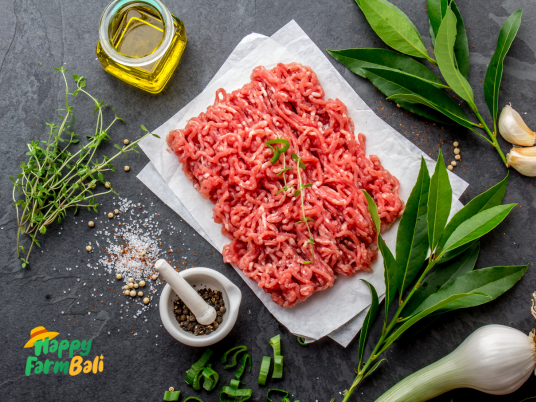
Beef that has been finely ground with a grinding machine is called ground beef. Made from real meat without any mixtures with a fat content of approximately 5-10%. It is one of the most versatile types of meat and is easy to prepare in various dishes. However, there are some basic facts to know to ensure when using this beef properly and safely.
Ground beef often raises several questions regarding its hygiene, shelf life, and protein content. One question that often arises is whether ground beef should be washed before use. The answer is no. Washing beef can actually cause cross-contamination in the kitchen. Therefore, make sure to buy ground meat from a trusted source and keep it cold until ready to use. Also, always wash your hands and kitchen utensils after handling ground beef to maintain hygiene.
The shelf life of ground beef is also a major concern. In general, ground meat can last up to 1-2 days in the refrigerator at around 4°C. If you want to keep it longer, it's best to store ground beef in the freezer. Mark the date of manufacture or purchase of the ground beef on the packaging before putting it in the freezer or refrigerator, making it easier to monitor its freshness.
The protein content in ground meat is one of the reasons why this product is in high demand. A serving of ground beef, about 100 grams, usually contains 14–22 grams of protein, depending on the fat content of the meat. To get a lower-fat source of protein, choose this beef that comes from the leaner parts of the meat. This way, you can consume ground meat that is not only protein-rich but also healthier.
Beef Processed
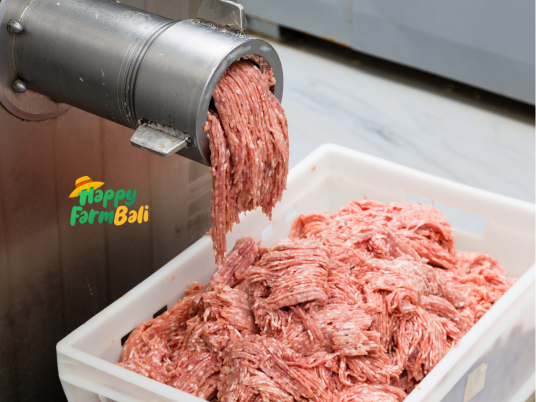
There are many types of processed meat. Generally, ground meat is widely used as a favorite food for children. No need to be confused anymore if you are looking for ground beef preparations for children. Ground meat is a versatile ingredient used in various cuisines from around the world. In Italy, ground beef is the main ingredient to make Bolognese, a rich and flavorful pasta sauce. In the United States, this beef is also very popular in making burgers, where ground beef is formed into a patty and grilled before being served with buns, lettuce, tomatoes, cheese, and various sauces.
Ground meat has many advantages and is flexible as a main ingredient as well as a mix. Asia also has a wide variety of ground meat preparations. For example, in the Middle East, ground beef is used in making kebabs. In China, ground meat is often used in dumplings or dumplings. Indonesia also has many traditional preparations that use this beef as the main ingredient. One of them is the ubiquitous bakso, while another is sate lilit from Bali, where ground meat is mixed with grated coconut and spices, wrapped around lemongrass stalks, and grilled until cooked. This variety of preparations shows how flexible ground meat is as a culinary ingredient that can be adapted in various recipes from various cultures.
Ground Beef Price
This type of beef is also often considered more economical than whole cuts of meat because it usually uses cheaper meat parts or a mixture of various parts. Speaking of prices, how much is ground beef price today? Prices on the market are very dynamic and often experience fluctuations caused by various factors. These price changes can be influenced by seasons, economic conditions, trade policies, and supply and demand in the market. For example, during festive seasons or holidays, demand for meat tends to increase, which can cause prices to rise.
On the other hand, disruptions to the supply chain, such as natural disasters or livestock disease outbreaks, can also affect the availability of meat and ultimately drive up prices. Therefore, it is difficult to ascertain the price of ground beef on any given day without looking at the current market conditions. Checking regularly can help you ascertain the price of ground meat. Price comparisons also need to be made to find the best price you can get for your meat. Conduct online price surveys on e-commerce or meat-related websites, or direct surveys at supermarkets or fresh markets. Do not be easily tempted by prices that are too cheap, you must also check the quality of the product. Make sure to buy quality ground beef products at the right price, choosing a quality meat distributor also makes it easier to determine the best price of ground meat.
Meat Distributor Company
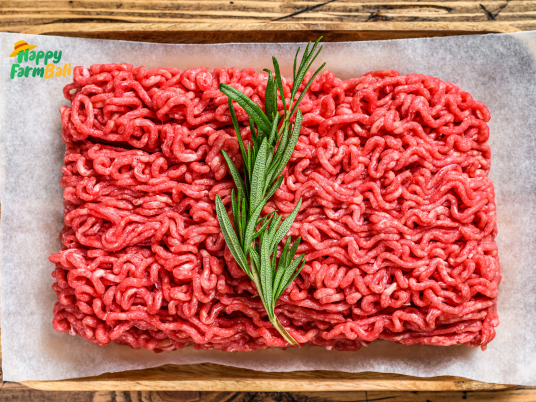
For high-quality ground beef, Happy Farm Bali is a highly recommended choice. As one of the largest meat distributor companies in Bali, Happy Farm has an extensive distribution network and is able to guarantee the availability of fresh and safe beef products. Equipped with modern storage, packaging, and delivery systems, Happy Farm is able to maintain product freshness from the time of processing until it arrives in the hands of consumers, both for household needs and culinary businesses.
Happy Farm Bali is the right choice for those who are looking for a ground beef distributor with competitive prices without compromising on quality. has a good reputation for providing ground beef that is processed with strict hygienic standards and supervised by experts. Our products are processed with modern technology to maintain their hygiene and nutritional content, making them a reliable choice for a wide range of consumers.
With their commitment to customer satisfaction, Happy Farm Bali has not only become the top choice for many culinary businesses in Bali but also for individuals looking for the best meat products for daily consumption. The combination of product quality, reliable service, and attention to detail makes Happy Farm Bali a trusted partner in fulfilling your beef needs.
Meltique Beef, the Affordable Version of Wagyu Beef
Meltique Beef
Meat lovers may have heard of or tried the popular meltique beef. When we look for wagyu, be it in restaurants or fresh markets, we may often find the term meltique along with wagyu. What exactly is meltique, a type of wagyu, another name for wagyu, or another variant of meat? Here's the explanation.
Meltique beef is beef that goes through a process of injecting vegetable fat to create artificial marbling that resembles wagyu. This technique often uses canola oil from the seeds of the canola flower, which gives it a visual appearance similar to the delicate fatty tissue in real wagyu. The concept was inspired by a French culinary method called "Pique" and was first developed in Japan in 1984.
The process of injecting vegetable fat allows regular meat to have a premium look and texture without the high costs associated with breeding and raising wagyu cows. This makes meltique beef a popular choice in restaurants and meat shops that want to offer high quality meat at a lower price. Meltique beef provides an exciting alternative for consumers who want the tender texture and flavor of wagyu, making it a new favorite in the culinary world.
Meltique Beef Price
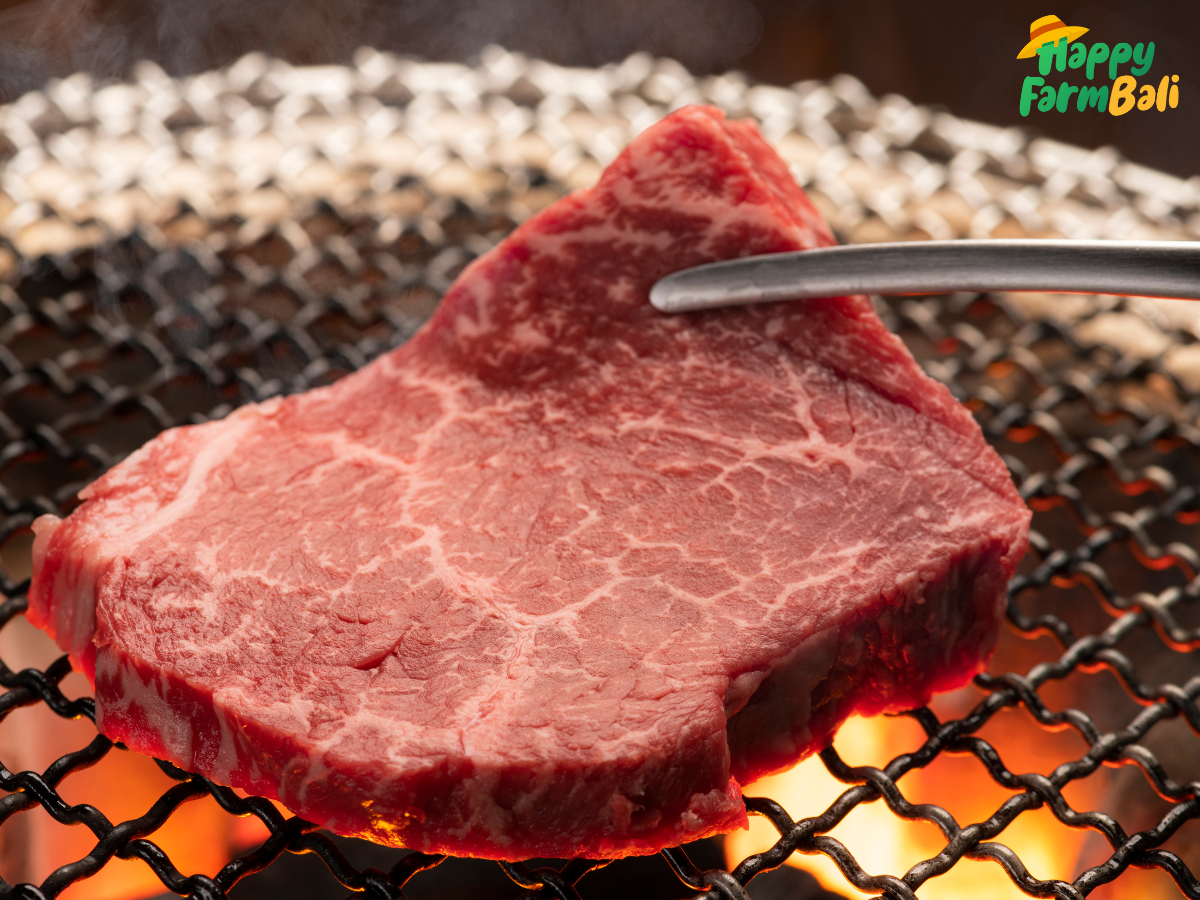
This innovation has caught the attention of foodies as it provides an eating experience similar to wagyu without the high price tag. Meltique beef is more affordable than real wagyu because the production process is more cost efficient. Price is a key indicator, real wagyu beef is very expensive due to its complex processing and high quality standards. This process does not require expensive production costs so the price of meltique is more affordable, usually around 100 thousand rupiah per kilogram.
The price of meltique beef today is not always the same and stable as it is influenced by various factors. Supply and demand in the market greatly affect price fluctuations. Due to the ever-changing variables, the price of meltique beef cannot be known with certainty from day to day. Traders and consumers should always monitor prices regularly to get accurate and up-to-date information. However, it is clear that the price of meltique beef is generally cheaper than wagyu beef.
So, if you find meat labeled as wagyu at a low price, be questionable. This makes wagyu a premium beef with a high price, while meltique offers a similar alternative at a lower price. If all restaurants chose wagyu for their steaks because of its better quality, the selling price would be very high, perhaps millions of rupiah per serving. To reduce raw material costs, some restaurants choose to use meltique beef instead of wagyu due to the large price difference.
Meltique vs Wagyu Beef
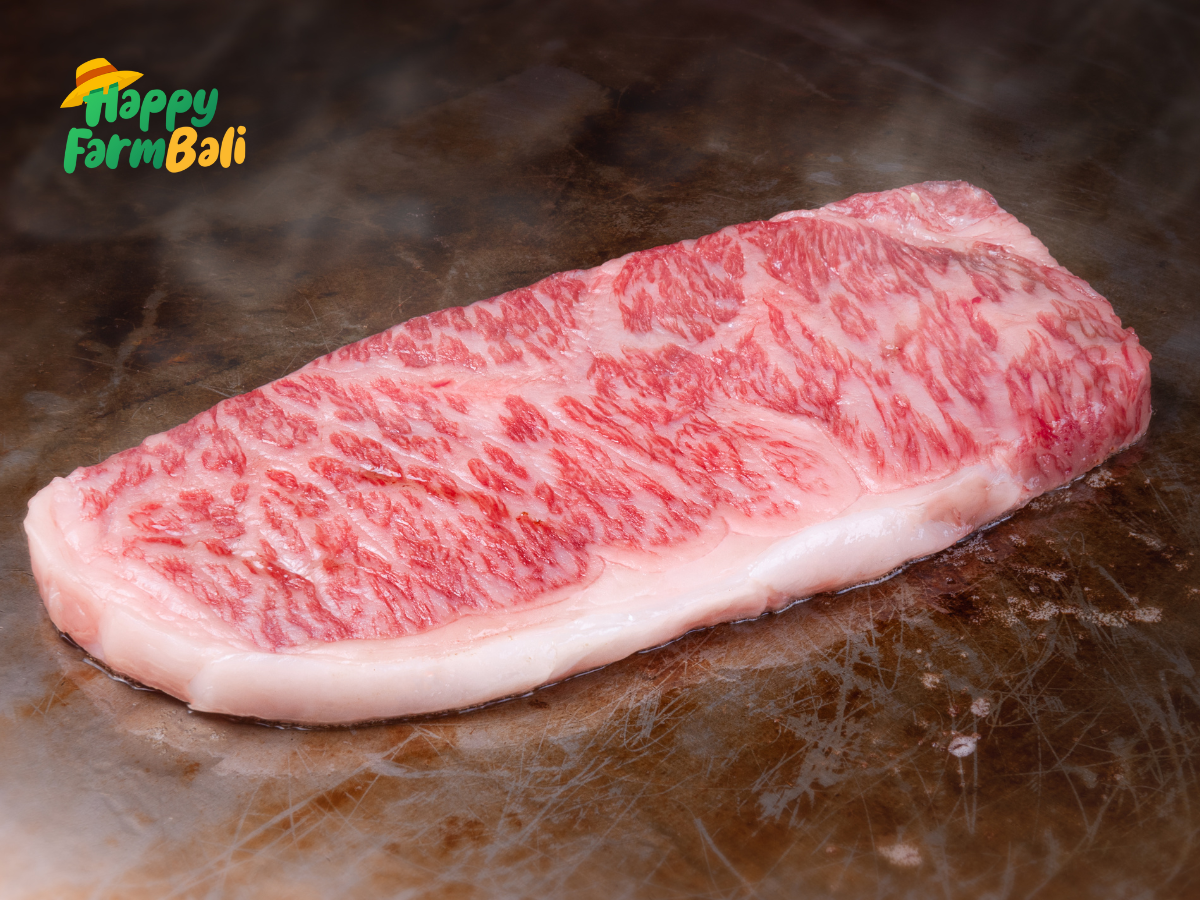
While meltique beef replicates the marbling of wagyu beef, it does not come from the original wagyu-producing breeds of cows. In fact, meltique beef is not wagyu, but ordinary beef processed to look and taste like wagyu, but at a more affordable price.
The nutritional content between meltique and wagyu beef is also different. Wagyu comes from Japanese prime cattle breeds that go through a strict breeding process and are high in unsaturated fatty acids and omega 3 and 6. Meltique, on the other hand, is regular beef that goes through a process of injecting vegetable fats, such as canola oil, to create artificial marbling. In terms of texture and taste, wagyu has fine natural marbling and the fat melts away when cooked, giving it a rich and savory flavor. Meltique, while having a soft texture and good flavor, gets its marbling through the injection of plant oil rather than naturally.
Meltique beef, which is made through the process of injecting vegetable fat, has many advantages. The main advantage is the shape of the marbling, which is almost the same as wagyu beef. Because of this, meltique can be used as a substitute for wagyu. Although similar, both meltique beef and wagyu are very different, and both have their own markets.
Meltique Beef Supplier

Meat suppliers will generally offer meltique meat as a more affordable alternative for consumers who want a high-quality meat experience without having to pay the high prices of real wagyu beef. Bali meltique beef supplier usually target beef parts such as sirloin and tenderloin for this process, as these parts are suitable for steaks and grills. Suppliers usually distribute their products to restaurants, hotels, and meat shops that are looking for an economical solution to serve meat with premium quality and taste, Happy Farm Bali is one of them.
As a major supplier of Bali meltique beef, Happy Farm Bali actively follows the fluctuations of meat prices in the market, including for the price of Bali meltique beef. The price of Bali meltique beef is not always stable, usually influenced by various factors such as supply, demand, as well as global and local economic conditions. Happy Farm strives to remain competitive and transparent in setting selling prices to consumers, by monitoring price movements regularly. Through a responsive approach to market dynamics, Happy Farm Bali ensures that consumers' needs for Bali meltique beef remain well supplied.
Happy Farm Bali is a Bali meltique beef supplier, known for its quality products and highly competent service in the field of meat distribution. With a focus on providing high-quality meltique variant beef, Happy Farm Bali or Bali Farm guarantees each piece of meat has a tender texture as well as a great taste. Selective production processes and high hygiene standards ensure that the meat produced is always fresh and healthy. Its strategic location in the center of Bali makes it easier to distribute to various restaurants and big-name hotels on the Island of the Gods. With a commitment to customer loyalty, Happy Farm Bali is the first choice for those looking for the best meltique beef in Bali.
15 Types of Beef Cuts Along with Their Explanations
Types of beef cuts are usually distinguished by which part of the cow the meat is taken from as well as the pattern and shape of the cut. In Indonesia, some popular types of beef cuts include sirloin, tenderloin, and brisket. However, there are still many other types of beef cuts available. Find out more in the following article.
Getting to Know 15 Types of Beef Cuts Along with Their Explanations
Sirloin
The type of beef cut Outer Sirloin, commonly known as Sirloin, is an affordable and popular cut of beef. Taken from the bottom of the ribs to the outer part of the tenderloin, it has a fine but dense texture. This meat is often chosen for its affordable price and good quality. Sirloin has little fat, making it ideal for those who want lean meat. Its rich taste and good nutrition make it a preferred choice for various recipes, from grilled steak to stir-fries. With its affordable price and ease of cooking, Sirloin is a favorite choice for many.
Tenderloin
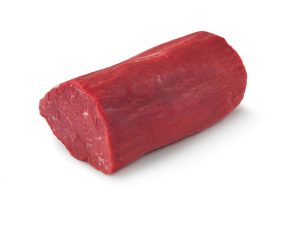
Taken from the middle of the body, specifically the spine, shoulder, and hip bones, tenderloin is a type of cut that has a softer texture than the previous type because the muscles of the cow in this area are less used. This type of cut is a favorite choice for fans of lean, tender steaks. It can also be made into beef empal, rendang, and meatballs.
Top Loin / Striploin
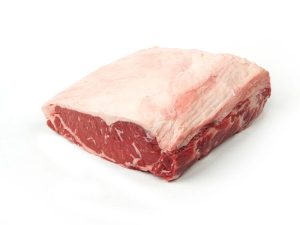
Top Loin, also known as Striploin, is a type of beef cut that comes from the back of the cow around the spine. Its low fat content gives this cut of beef a tender yet juicy texture. Striploin is often used in various dishes, from grilled steak to kebabs. This cut of meat has a somewhat dense but still tender texture, making it perfect for grilling, roasting, or grilling.
It has a rich and savory taste due to its fat content, which gives it a delicious taste and aroma when cooked. This part is also often used in the culinary industry as the main ingredient for premium steak dishes and grilled meat dishes favored by many people around the world.
Brisket
If you like to cook soupy dishes, then this next type could be the right choice. The beef brisket is taken from the lower chest area around the cow's armpits. This type has quite a lot of fat layers, making it suitable for making soupy dishes.
Beef Shank
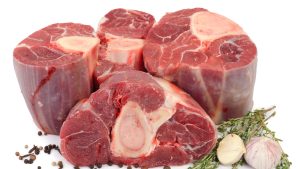
Next is Shank or known as Beef Shank. This cut of beef is taken from the upper front leg. Because the muscles in this part of the meat are often used, the texture of this part is tougher and drier compared to other parts. This type is suitable for dishes that are cooked for a long time like rendang.
T-Bone
As the name suggests, this type of cut has a bone still attached to its middle part and forms a T shape. The T-Bone is taken from the bottom of the tenderloin to the bottom of the back. This type is known for its tender texture and is one of the favorite beef cut images for making steaks.
Porterhouse
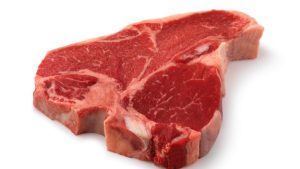
Various premium cuts of beef that are famous for having a combination of two different cuts, namely tenderloin and strip steak, separated by a large T-bone. The tenderloin part provides a soft and slightly fatty texture, while the strip steak provides a rich and fatty taste. This cut is suitable for grilling, roasting, or baking. Because it has two main cuts in one piece, Porterhouse is often considered a special choice for steak dishes. Its deep flavor and rich texture make it a favorite of beef lovers who appreciate premium quality.
Ribs
As the name suggests, this type of beef cut is taken from the meat attached to the ribs or ribs of the cow. This part is also often called rib eye or ribs. Usually, this part has rib or rib bones attached to the meat. This type of cut is quite popular for making Grilled Ribs or Rib Soup.
Short Ribs (Galbi)
Short Ribs are actually not much different from the previous type, taken from the meat attached to the ribs. However, it has cross-cut slices with shorter rib bones. This cut can be grilled or roasted and is very commonly found in Japanese or Korean BBQ restaurants.
Saikoro
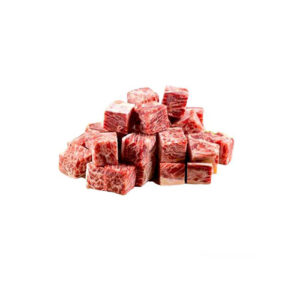
Visiting a Japanese BBQ restaurant, you will definitely find a picture of this type of beef cut on its menu. Saikoro is actually a piece of tenderloin but cut into cubes. This type of cut is a choice for grilling or eating with Japanese Yakiniku sauce.
Flank
Flank or Flank is a type of beef cut taken from the cow's stomach muscles. The fat content in this type of beef makes it suitable for processed beef recipes that require cooking by boiling for a long time such as soup or beef stew.
Front Flank (Short Plate)
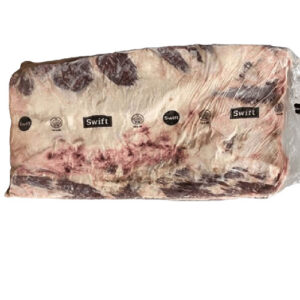
Also taken from the stomach muscles, this type is known as short plate, beef plate, and sliced beef. The characteristics of this type of beef are not much different from the Flank beef so it is suitable for cooking for a long time like stew or minced beef.
Oxtail
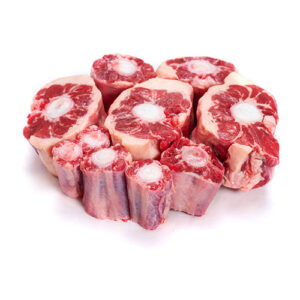
It can easily be guessed that this type of beef cut is taken from the tail or tail of the cow. The fat content in cow tail meat is quite high, making it very popular for making Oxtail Soup in Indonesia.
Beef Tongue
A fairly common type of beef cut for cuisine in Indonesia is beef tongue. There are various ways to process it. Starting from frying, sautéing, stir-frying, and boiling, there are quite a few variations of beef tongue recipes. One popular Indonesian cuisine made from beef tongue is Sate Padang.
Pink Slime
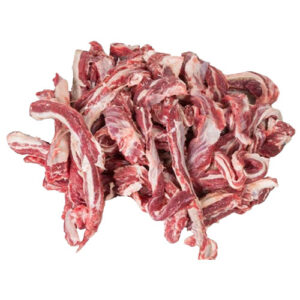
The last type of cut is the remnants of meat and fat left on the bones after the cutting process. It has a fairly high fat content and is rarely used as the main ingredient in cooking. However, it can still be processed into the base for making savory beef broth.
For those of you who are looking for a Beef Supplier in Bali, then Happy Farm Bali is the answer. Happy Farm Bali is a distribution company of imported and local meat products engaged in providing quality meat products from the best sources domestically and internationally.
Happy Farm Bali also distributes meat to customers, hotels, restaurants, catering, supermarkets, and others. By using a logistics system, it will be more efficient and safe. Always remember if you are looking for a Beef Supplier in Bali, then Happy Farm Bali is the choice.

